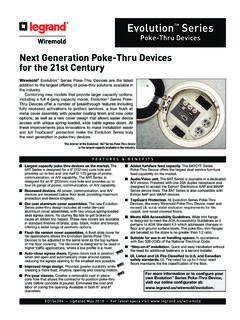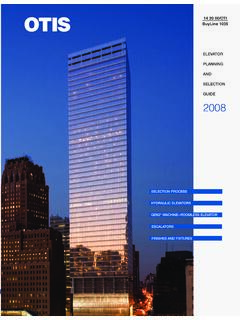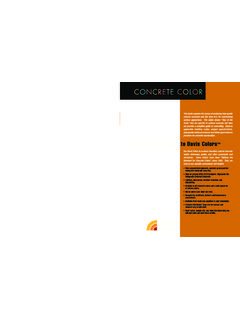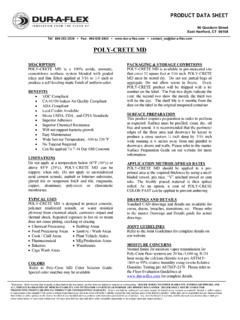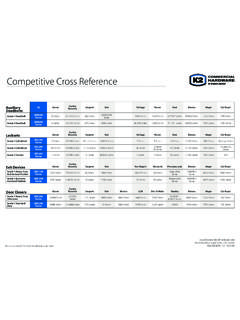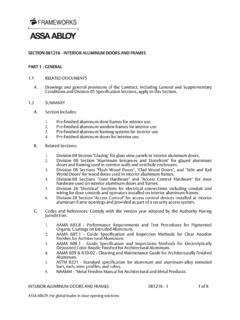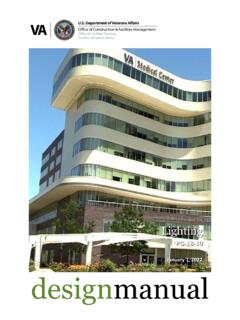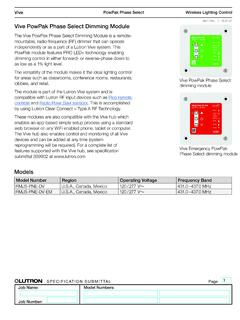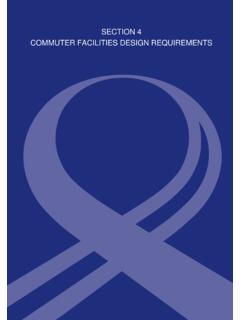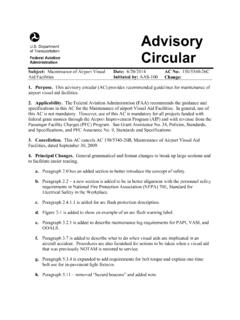Transcription of Theatrical Rigging System Design Guide - Construction
1 Theatrical Rigging System Design Guiderevised 2010 Theatrical Rigging System Design guiDeThiS Design Guide is intended to assist in the planning of Rigging systems. The concepts covered are applicable to theatres of all sizes. For more in-depth assistance please feel free to contact J. r. clancy directly. We are dedicated to helping you Design the safest, most complete and economical Rigging systems Do We need Rigging ? .. 1 Types of Rigging .. 2rigging Safety .. 5motorized Rigging .. 6manual counterweight Rigging .. 14motorizing manual Rigging .. 17 Fire Safety curtains .. 18 Stage & Rigging layout .. 21 For more information .. 25 Technical information .. 25much of the functionality and safety of an installed Rigging System is dependent upon the proper selection and integration of equipment and on its proper installation and operation.
2 For this reason, J. r. clancy does not warrant the suitability of any product in this document for any application unless J. r. clancy specifically designed and engineered the specifications and drawings of the Rigging System and the products are installed in accordance with those documents. The information in the document is current as of the printing date, and every effort has been made to ensure its accuracy. however, no guarantee of accuracy is made or implied. J. r. clancy reserves the right to update its equipment designs at document is copyright 2010 by Clancy, Inc. Permission is granted to specifiers, owners and users of Clancy equipment to make and distribute copies of complete pages of the document with the Clancy name and contact information included. Modification of any part of this document, copying partial pages, or removal of the Clancy name and contact information is n (315) 451-3440 n Fax (315) 451-1766 n n System Design GuidePaGe 1n Why DO We neeD Rigging ?
3 Rigging is essential to safely move equipment overhead on the stage and serves the following functions:access to equipmentrigging allows you to raise and lower the stage lighting and other onstage equipment for adjustment, replacement of lamps and gels, and to perform essential routine maintenance. lighting equipment is frequently moved to meet the requirements of individual productions. all of these functions are most easily (and safely) performed when the battens are brought to the floor level, rather than working off of effectFor many theatres, the primary use of the Rigging equipment is to move scenery for dramatic effect. a well-designed Rigging System makes simple, easy scene changes possible. many shows use scenery moving in view of the audience, adding impact that becomes a key part of the of equipmentcurtains are used to frame the visual picture as well as masking equipment from audience view.
4 This frame can change to meet the requirements of specific productions, requirements that can be achieved quickly and easily with a properly designed Rigging n (315) 451-3440 n Fax (315) 451-1766 n n System Design Guiden TyPeS OF riggingrigging can be dead hung, manually operated, or motorized (automated). These methods may be mixed within a stage to meet production and budget HunG RiGGin GThe simplest Rigging is dead hung, consisting of pipes (called battens) or tracks that are hung from the ceiling. These may support curtains, lights, or scenery. Dead hung Rigging is typically used where low ceiling heights or limited funds prohibit the use of anything else. all maintenance and changes require the use of a ladder, which is inconvenient and can be hazardous. Dead Hung RiggingManually OPeRaTeD C OunTeRweiGHT RiGGin Gmanually operated counterweight systems have been used on stages for over 100 years.
5 The load being raised or lowered (scenery, curtains, or lights) is counterbalanced by an arbor loaded with the correct amount of steel weights as shown Counter weight RiggingPaGe 21-800-836-1885 n (315) 451-3440 n Fax (315) 451-1766 n n System Design Guidemanually operated counterweighted sets are economical to purchase. They also offer versatile performance capabilities. The operator can produce speeds that range from the subtle to the dramatic to meet the needs of the performance onstage. a trained operator can feel any change in the load or contact with an obstruction and take corrective action. experienced operators can produce effects that go beyond technology, putting art into the performance. The downside is that the weights must be adjusted every time the load changes on the batten of these sets depends on correctly balancing the load with steel weights.
6 This requires that people using the equipment be trained in the correct procedures for operating the equipment. The loads on sets will change as the suspended scenery and equipment are changed, requiring the user to adjust the RiGGin GThere has been a shift from manual to motorized Rigging (also known as automated Rigging ) in the past few years. motorized Rigging enhances the impact of your productions. Dramatic scenery moves can be programmed effortlessly using simple, instinctive controls. you ll have the assurance of predictable, consistent scenery movements at every movement to motorized Rigging has affected theatres at all levels from middle schools to opera houses. Safety and efficiency are key factors in this change. motorized sets are easier to use and do not require the handling of counterweights.
7 The ease of use, however, does not reduce the need for operator training. Motorized HoistPaGe 31-800-836-1885 n (315) 451-3440 n Fax (315) 451-1766 n n System Design GuideThe motorized Rigging sets used onstage are generally dead haul sets, where the motor lifts the entire weight of the equipment without the use of counterweights. This eliminates the safety concerns that come with improperly balanced sets and the need to handle heavy weights. Operators use control systems ranging from simple push button panels to computerized control systems with the ability to record and play back motorized Rigging sets have a higher initial cost than manually operated counterweight sets, there are offsetting savings: the use of motorized Rigging equipment requires less stage space and less structural steel than equivalent manual counterweight sets personnel costs for operations can be lower removing counterweights eliminates a potential cause of repetitive stress injuryanother approach to motorized Rigging is to upgrade manually operated counterweighted sets with the Powerassist hoist.
8 This hoist uses the existing Rigging hardware (which must be in good condition and rated for the load) and motorizes the operation of the Rigging set. many theatres motorize their lighting sets, as they are typically the most used sets, and the ones with the greatest changes in M uCH RiGGin G DO i neeD?The intended uses of the stage will help determine how much Rigging is required. a t minimum a few sets allow the lighting equipment to be raised and lowered for safe and easy maintenance. On the other hand professional theaters may have 100 or more Rigging sets to maximize flexibility in their curtains may be dead hung (hung at a fixed height) on simple stages, this limits their utility, as they cannot be raised or lowered to meet the needs of specific productions, or even to allow the stage floor to be swept.
9 Any stage where presentations are made needs a few sets to raise and lower banners, signs, support hanging microphones, etc. if plays will be produced, additional Rigging will be required to allow the movement of scenery and other dramatic effects. Rigging is all about technology aiding art, so it s hard to have too many OF HOuSe liGHTin G POSiTiOnSThe front of house lights are the most used lights, requiring frequent access for adjustment and lamp replacement. These key lighting positions are generally located above the audience seating, making access difficult and possibly hazardous unless there are fixed, structural these are not possible, front of house hoists can be used to raise and lower equipment. u nless robotic lighting fixtures are provided, it will be necessary to provide a man lift that will allow students and staff to adjust the Theatrical 41-800-836-1885 n (315) 451-3440 n Fax (315) 451-1766 n n System Design Guiden Rigging SaFeTyas with any type of machinery, there are dangers if the System is not used correctly.
10 All users must be trained in the proper and safe operation of the must be particularly vigilant in watching the moving equipment. counterweight equipment must be properly balanced, or the side with the heavier load will descend. The greater the imbalance between the loads the more rapid the descent which will be increasingly difficult to control. When operating a manual set there is a great deal of tactile feedback that allows the operator to feel the load and its performance. With motorized hoists load monitoring can perform similar functions. TrainingProper training and a policy of allowing only trained and authorized personnel to use Rigging equipment are essential components of your safety program. People who are using moving equipment must understand the equipment, the proper methods of operating equipment, and the hazards involved.

